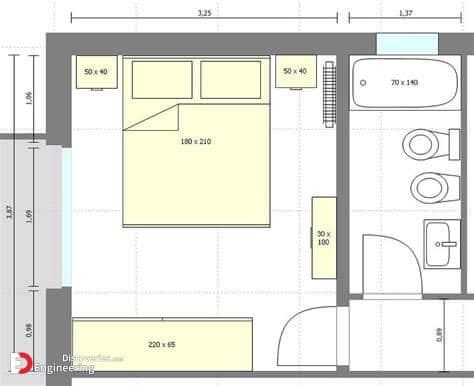In recent years, stained glass trends has experienced a resurgence in modern architecture, bridging the gap between centuries-old craftsmanship and contemporary design innovation. According to a market analysis by Market Research Future, the stained glass industry is projected to grow at a steady rate of 4.5% annually between 2025 and 2034. This revival is not merely aesthetic; stained glass offers unique light manipulation, privacy solutions, and artistic flair, making it a popular choice for residential, commercial, and public buildings alike.
The Modern Appeal of Stained Glass
Historically, stained glass was predominantly associated with religious buildings and cathedrals, celebrated for its vibrant colors and intricate designs. Custom glass experts Flickinger Glassworks outline how the role of stained glass has expanded in contemporary times, moving into more secular and diverse spaces, including homes and public buildings. Today, architects and designers are reinterpreting this classic medium to create bold, modern statements. Stained glass is being embraced not only for its beauty but also for its functional benefits. It can diffuse natural light, reduce glare, and create dynamic color effects throughout the day. Additionally, stained glass windows enhance privacy while maintaining openness, making them particularly valuable in urban settings.
Reinterpreting Stained Glass in Contemporary Design
1. Minimalist Integration
Modern architects are shifting away from the heavy, ornate patterns of traditional stained glass. Instead, they are favoring minimalist designs with clean lines, geometric shapes, and subtle color palettes. This approach allows stained glass to complement sleek, contemporary interiors without overwhelming them. Architects like John Pawson have pioneered this style, integrating stained glass into modern homes where simplicity and light define the aesthetic.
2. Abstract and Artistic Expressions
Contemporary designers are using stained glass as a medium for abstract art. Large-scale installations featuring gradients, asymmetrical patterns, and organic forms have transformed buildings into visual masterpieces. Artists like Brian Clarke have pushed the boundaries of stained glass, creating dynamic works that interact with both natural and artificial light.
3. Interactive and Dynamic Light Displays
Cutting-edge technology has enabled stained glass to be more interactive. Smart glass, which changes opacity based on light or user control, is being combined with traditional stained glass techniques. This fusion allows buildings to adapt their appearance throughout the day, enhancing both visual interest and energy efficiency. The combination of dynamic lighting and stained glass creates an ever-changing atmosphere, transforming interior spaces.
Applications in Homes, Offices, and Public Buildings
Residential Spaces
Homeowners are increasingly incorporating stained glass to personalize their living environments. From colorful kitchen backsplashes to bespoke bathroom windows, stained glass adds character and warmth to residential interiors. Floor-to-ceiling stained glass panels are being used to create vibrant partitions, turning everyday rooms into artistic sanctuaries.
Commercial Offices
Forward-thinking businesses are integrating stained glass into office spaces to foster creativity and well-being. Natural light filtered through colored glass reduces eye strain and creates an inspiring work environment. Meeting rooms with stained glass walls offer privacy without feeling closed off, encouraging collaboration while maintaining individual focus.
Public and Cultural Buildings
Public buildings have become canvases for stained glass innovation. Museums, libraries, and concert halls utilize stained glass installations to enhance their cultural identity and engage visitors. The play of light and color fosters an inviting atmosphere, encouraging people to interact with the space in new ways.
Iconic Modern Buildings with Stained Glass Windows
1. The Chapel of St. Ignatius (Seattle, USA) – Steven Holl (1997)
Steven Holl’s Chapel of St. Ignatius is a masterclass in modern stained glass application. The chapel’s walls feature irregularly shaped stained glass windows that filter light into pools of color, symbolizing spiritual enlightenment. The asymmetrical arrangement creates an ethereal atmosphere, demonstrating how stained glass can transcend traditional religious motifs.
2. The Louvre Pyramid Expansion (Paris, France) – JR (2016)
While the iconic glass pyramid itself is a feat of modern architecture, artist JR incorporated stained glass elements into a temporary installation, blending art with the building’s sleek structure. The result was a striking juxtaposition of classical stained glass imagery with contemporary minimalism, attracting global acclaim.
3. The Tree of Life Chapel (Bergamo, Italy) – Mario Botta (2011)
Renowned architect Mario Botta designed the Tree of Life Chapel as a modern sanctuary where stained glass takes center stage. The chapel’s windows depict abstract interpretations of nature, casting shifting patterns of light across the interior. This interplay between glass and sunlight creates a meditative ambiance, illustrating stained glass’s power to evoke emotion in modern settings.
4. Cathedral of Brasília (Brasília, Brazil) – Oscar Niemeyer (1970)
The Cathedral of Brasília is an iconic example of modern stained glass architecture. Designed by Oscar Niemeyer, the cathedral’s stained glass ceiling features vibrant blue, green, and white hues that bathe the interior in ethereal light. The interplay between the stained glass and the cathedral’s hyperboloid structure creates a celestial ambiance, symbolizing the harmony between architecture and spirituality.
The Future of Stained Glass in Architecture
As architecture continues to evolve, stained glass is poised to play an even more integral role in design. Sustainability initiatives are driving the development of energy-efficient stained glass, incorporating photovoltaic cells to harness solar energy. Additionally, advancements in glass technology allow for larger, more complex installations, further expanding the creative potential of this versatile material.
Architects are also exploring the fusion of stained glass with other materials like metal and concrete. This multidisciplinary approach results in buildings that are not only structurally innovative but also visually captivating. Hybrid designs featuring stained glass panels embedded within concrete facades exemplify the seamless blend of tradition and modernity.
Stained glass trends in modern architecture represents a harmonious fusion of tradition and innovation. Its ability to manipulate light, create privacy, and serve as a medium for artistic expression has solidified its place in contemporary design. Whether enhancing a private home, energizing an office environment, or enriching a public space, stained glass continues to captivate and inspire. As technology advances and designers push creative boundaries, stained glass will undoubtedly remain a cornerstone of architectural artistry for generations to come.
For more on the innovative and latest ideas regarding architecture, do go through the rest of Architectures Ideas.
In Case You Missed It!
How To Remove Scratches From Glass Furniture?
A Simple and Basic Way to Install Your Glass Stair Railing
8 Best Glass Cleaner For Shower Doors of 2025
The post Stained Glass Trends in Modern Architecture: Blending Tradition with Innovation appeared first on Architectures Ideas.



